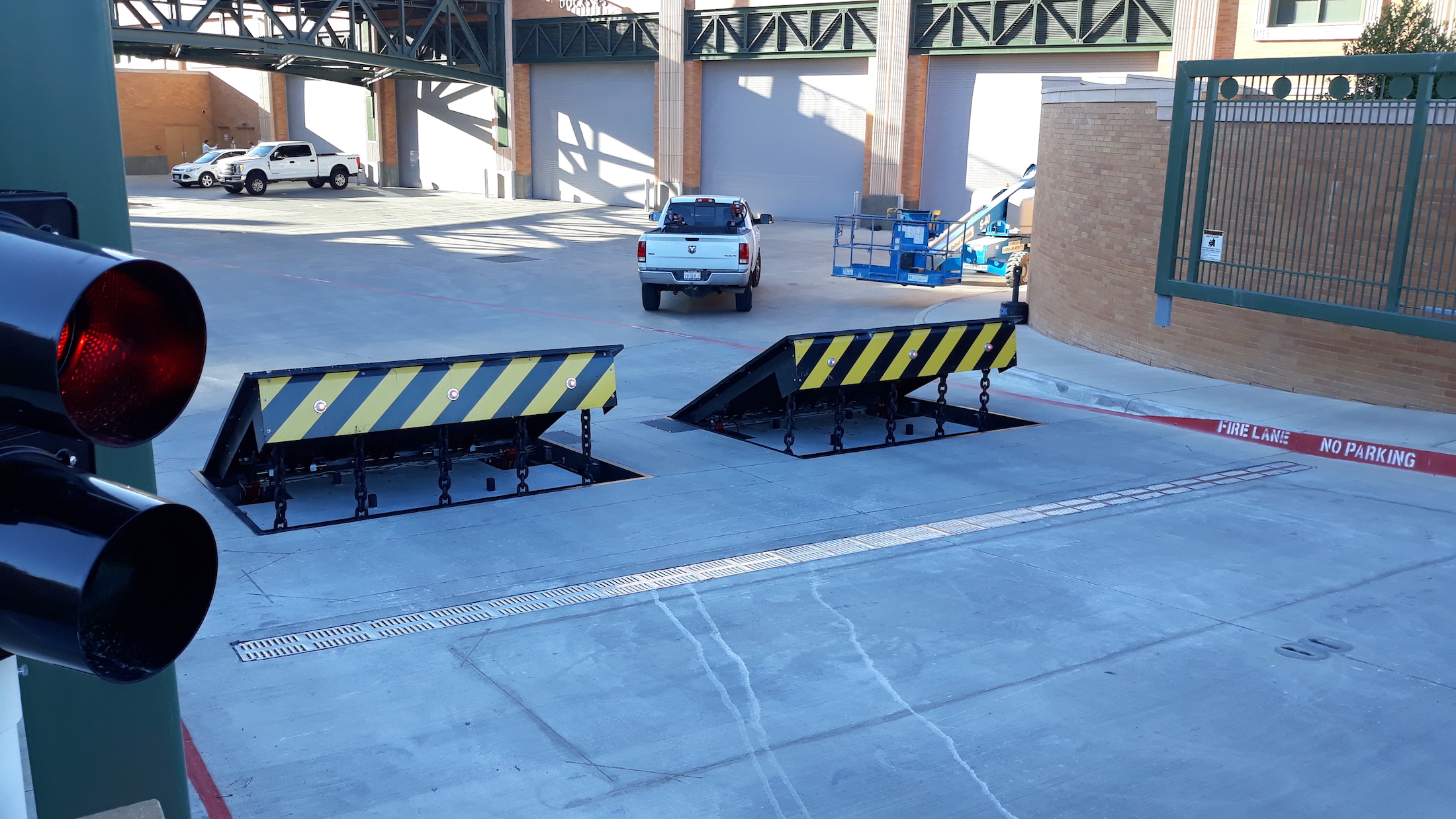The Greatest Guide To Wedge Barriers
Wiki Article
Wedge Barriers Fundamentals Explained


The spring pole 58 is combined to a web cam(e. g., web cam 80 displayed in FIG. 4) of the training system 50. The springtimes 60 disposed concerning the springtime rod 58 are kept in compression by spring supports 62, including a taken care of springtime assistance 64. That is, the fixed springtime assistance 64 is repaired family member to the structure 14 et cetera of the bather 10.
An Unbiased View of Wedge Barriers
g., spring support 65 )may be taken care of to completion of the springtime pole 58 to allow compression of the springtimes 60. As the springs 60 are compressed between the springtime sustains 62, the spring setting up 54 generates a pressure acting upon the cam combined to the springtime rod more info here 58 in an instructions 66. As an example, the staying force related to the cam to release the wedge plate 16 might be offered by an electromechanical actuator 84 or other actuator. The springtime assembly 54 and the actuator 84(e. g., electromechanical actuator)may run together to convert the webcam and raise the wedge plate 16.
As stated over, the springtime assembly 54 puts in a continuous force on the webcam, while the electromechanical actuator might be regulated to apply a variable pressure on the web cam, therefore enabling the training and decreasing( i. e., releasing and withdrawing )of the wedge plate 16. In certain personifications, the constant pressure used by the spring assembly 54 might be adjustable. g., electromechanical actuator) is disabled. As will be appreciated, the spring setting up 54 may be covered and shielded from debris or other components by a cover plate(e. g., cover plate 68 displayed in FIG. 4) that might be significantly flush with the raised surface area 38 of the structure 14. As pointed out above, in the deployed placement, the wedge plate 16 offers to obstruct access or travel beyond the obstacle 10. The barrier 10(e. g., the wedge plate 16 )may block pedestrians try this site or cars from accessing a building or pathway. As talked about above, the barrier 10 is attached to the support 30 secured within the structure 14,

front braces 71. Therefore, the affiliation settings up 72 might pivot and rotate to enable the collapse and extension of the link settings up 72 during retraction and implementation of the bather 10. The linkage assemblies 72 reason activity of the wedge plate 16 to be restricted. If a car is taking a trip in the direction of the released wedge plate 16(e. For instance, in one circumstance, the safety legs 86 might be expanded duringmaintenance of the barrier 10. When the safety and security legs 86 are released, the security legs 86 sustain the weight of the wedge plate 16 against the surface 12. Because of this, the training system 50 may be deactivated, serviced, removed, changed, and so forth. FIG. 5 is partial perspective sight of an embodiment of the surface-mounted wedge-style barrier 10, showing the camera 80 and the camera surface areas 82 of the training device 50. Specifically, 2 webcam surface areas 82, which are described as lower webcam surfaces 83, are placed listed below the web cam 80. The reduced cam surface areas 83 might be repaired to the surface area 12 (e. For instance, the lower webcam surface areas 83 and the placing plate 85 might form a single piece that is secured to the support 30 by bolts or various other mechanical fasteners. In addition, 2 webcam surface areas 82, which are described as top camera surface areas 87, are positioned above the webcam 80 and paired to (e. In other embodiments, intervening layers or plates may be placed between the surface area 12 and the lower web cam surface areas 83 and/or this post the wedge plate 16 and the top camera surface areas 87 As mentioned over, the cam 80 translates along the camera surface areas 82 when the wedge plate 16 is lifted from the withdrawed placement to the released setting. Additionally, as pointed out above, the spring assembly 54 (see FIG. 3 )may offer a force acting upon the cam 80 in the instructions 102 via spring pole 58, which may reduce the pressure the electromechanical actuator 84 is called for to apply to the webcam 80 in order to actuate and lift the wedge plate 16. 1 )to the released placement(see FIG. 4). As revealed, the webcam 80 consists of track wheels 104(e. g., rollers), which contact and translate along the webcam surface areas 82 during operation.
Report this wiki page